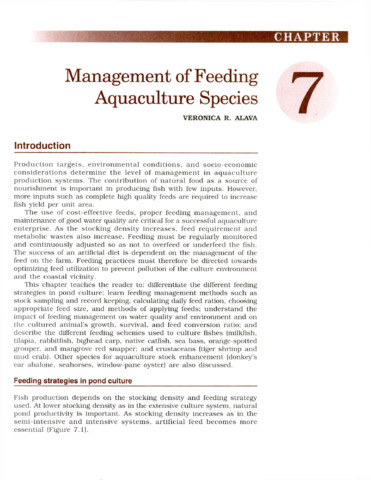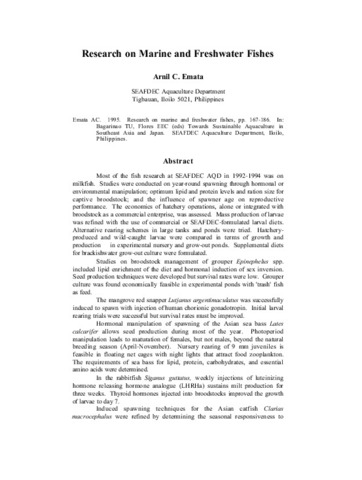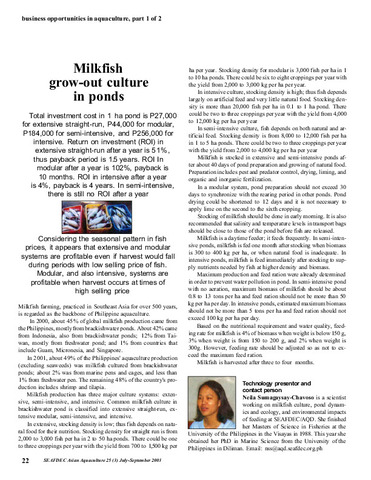Diurnal feeding pattern and gut content of milkfish Chanos chanos (Forsskål, 1775) cultured semi-intensively during the wet and dry season in brackish ponds in the Philippines
- Global styles
- MLA
- Vancouver
- Elsevier - Harvard
- APA
- Help

View/
Date
2008Page views
4,087ASFA keyword
AGROVOC keyword
Taxonomic term
Metadata
Show full item record
Share
Abstract
To improve feeding management and reduce feed cost in semi-intensive grow-out culture of milkfish (Chanos chanos, Forsskål 1775) in brackish ponds, the relative shares of natural food (NF) and supplemental feed (SF) ingested by the fish were microscopically quantified from their completely dissected digestive tracts sampled during 24-h cycles in wet (June–September) and dry (December–April) seasons. Particles from rice husk, indigestible to milkfish, were used as internal markers to quantify supplemental feed. Significantly (P<0.05) more NF than SF (1.4±0.2 vs. 0.4±0.1 g kg−0.8) and SF than NF (1.4±0.8 vs. 0.6±0.3 g kg−0.8) were found during the first month of the wet and the first 3 months of the dry season respectively. Diurnal feeding patterns on SF were significantly higher at morning hours during the dry compared with the wet season. The feeding pattern of milkfish is likely to be affected by the different weather and pond conditions in both seasons. Developing a season-specific pond fertilization management to enhance NF availability in semi-intensive milkfish culture can help to improve the economical and ecological performance of milkfish culture.
Suggested Citation
Kühlmann, K.-J., Focken, U., Coloso, R. M., & Becker, K. (2008). Diurnal feeding pattern and gut content of milkfish Chanos chanos (Forsskål, 1775) cultured semi-intensively during the wet and dry season in brackish ponds in the Philippines. Aquaculture Research , 40(1), 2-12. https://doi.org/10.1111/j.1365-2109.2008.02096.x
Type
ArticleISSN
1355-557X; 1365-2109Collections
- Journal Articles [1258]
Related items
Showing items related by title, author, creator and subject.
-
Management of feeding aquaculture species
Alava, Veronica R. (Aquaculture Department, Southeast Asian Fisheries Development Center, 2002)This chapter teaches the reader to: differentiate the different feeding strategies in pond culture; learn feeding management methods such as stock sampling and record keeping, calculating daily feed ration, choosing ... -
Research on marine and freshwater fishes
Emata, Arnil C. (Aquaculture Department, Southeast Asian Fisheries Development Center, 1995)Most of the fish research at SEAFDEC AQD in 1992-1994 was on milkfish. Studies were conducted on year-round spawning through hormonal or environmental manipulation; optimum lipid and protein levels and ration size for ... -
Milkfish grow-out culture in ponds
Sumagaysay-Chavoso, Neila (Aquaculture Department, Southeast Asian Fisheries Development Center, 2003)Milkfish farming is regarded as the backbone of Philippine aquaculture. In 2001, nearly 50% of the Philippines' aquaculture production was milkfish cultured from brackishwater ponds. It has 3 major culture systems: extensive; ...





